Jun 3, 2018 | commentary, dollar, economy, investment, markets, policy
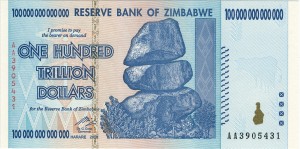
Zimbabwe’s 2009 $100 trillion hyperinflation note
In the news this week was a story about the Reserve Bank of Zimbabwe touting the adoption of Chinese currency for general use in the country as circulating currency.
Zimbabwe’s economy has seen wild swings between massive inflation and significant economic stagnation that has caused currency fluctuations so bad that the country has given up managing its own currency. The economic problems have created a hyperinflation currency with notes printed with denominations as high as 100 Trillion Zimbabwean Dollars. So many of these notes were printed that any collector can buy them for $5-10 each.
Because of trade restrictions, Zimbabweans turned to United States currency smuggled from outside of the country. The supply of United States currency was so limited that some had begun the practice of cleaning the paper because people were carrying their currency in their underwear and new notes were difficult to come by.
Following negotiations with the United States, the RBZ was able to obtain new currency notes and offered an exchange to its residents. But that is where the negotiations ended. Upon the change of administrations, the current Department of the Treasury stopped negotiating with Zimbabwe and other African nations to introduce additional trade in United States dollars.
As the United States began to abandon these countries, the Chinese stepped in. The Chinese government has been negotiating with these countries and have made several inroads, especially in Africa. Zimbabwe is just the latest to announce that they could adopt the Yuan as their currency.
Although Zimbabwe is not an influential economy, it expands the Chinese economic base in Africa. By chipping away at the United States economic influence, it reduces the impact of the dollar on the continent that could have an effect on numismatics.
Africa continues to have the largest deposits of precious metals. Southern African regions have the world’s most active gold, silver, and platinum mines that if the United States loses influence in the region could have a negative effect on worldwide precious metals prices.
It is not a matter of the golden rule, “He who has the gold rules,” it is a matter of who controls the flow of gold from those mines. If the Chinese control the economic engine that runs those mines, they can use that influence to make or break the markets as they see fit. The ripple effect could not only bring higher precious metals prices but worldwide economic instability.
History has taught us that market manipulating does not work except if the manipulators have a backup plan. In this case, the Chinese are using their treasury as the backup plan. They are amassing economic power that could manipulate markets to the point that would cause prices to rise.
Currently, precious metals prices are set by arrangement with the London Bullion Market Association (LBMA) based on the daily auction prices in London. This is known as the London Fix Price. The market uses United States dollars for its pricing. However, if the dollar loses its economic power because the Chinese are controlling the markets where the metals are mined, it will affect the cost of everything.
In the short term, economic factors will affect the price of bullion being produced by the U.S. Mint since those prices are based on LBMA price averages. Collectors and investors will be hit first. After that, it would be a short time before economic instability hits everyone else.
And now the news…

May 27, 2018
If you visit Stones River National Battlefield and Cemetery, you'll likely see coins on the top of many tombstones. According to park workers, the small mementos are a way some choose to pay their respects to the fallen soldier, and each kind of coin has a different meaning.  → Read more at newschannel5.com
→ Read more at newschannel5.com

May 27, 2018
In this edition of East Idaho Newsmakers, Nate Eaton speaks with Randy’L Teton. Teton is a Fort Hall native and is featured on the US Sacagawea dollar gold coin. She is the only living person to currently appear on a United States coin. During their conversation, Teton shares the fascinating story of how she ended …  → Read more at eastidahonews.com
→ Read more at eastidahonews.com

May 28, 2018
TOKYO (Jiji Press) — The Finance Ministry said Friday that it will issue a silver coin to commemorate the 150th anniversary of the 1868 start of the country’s Meiji period, which ended in 1912.  → Read more at the-japan-news.com
→ Read more at the-japan-news.com

May 29, 2018
Ahmed Mohamed Fahmy Yousef has spent the last academic year at the University of Colorado conducting research on learning technologies and instructional design in computer science education.  → Read more at dailycamera.com
→ Read more at dailycamera.com

May 29, 2018
Tawanda Musarurwa, Harare Bureau The adoption of Renmimbi/Yuan as a reserve currency, will help the country repay loans and grants from China, the Reserve Bank of Zimbabwe has said.  → Read more at chronicle.co.zw
→ Read more at chronicle.co.zw

June 1, 2018
Archaeologists in Egypt have unearthed a 2,200-year-old gold coin depicting the ancient King Ptolemy III, an ancestor of the famed Cleopatra.  → Read more at foxnews.com
→ Read more at foxnews.com

June 1, 2018
An ancient Egyptian coin discovered in far north Queensland has researchers questioning how it got there.  → Read more at abc.net.au
→ Read more at abc.net.au

June 3, 2018
The Royal Canadian Mint unveiled their first-ever panda-themed coin at the Calgary Zoo.  → Read more at thestar.com
→ Read more at thestar.com
May 29, 2018 | coins, dollar, history, US Mint

Randy’l Teton interview on East Idaho Newsmakers (screen grab)
Since there are no known images of Sacagawea, Goodacre searched for someone she could model her design on. Goodacre found Randy’L He-Dow Teton is a member of the Shoshone-Cree tribe to be the model. Teton was a student at the University of New Mexico majoring in art history and was working for the Institute of American Indian Arts Museum in Santa Fe when Goodacre visited looking for information about the Shoshone tribe. While talking with the museum’s curator, Goodacre was shown a picture of the curator’s daughter, Randy’L, and decided to work with her to create the Sacagawea design.
Recently, Teton sat with Nate Eaton of EastIdahoNews.com for his series East Idaho Newsmakers. Although they cover other topics, most of the video is about Teton’s experience as being the model for Sacagawea.
EastIdahoNews.com does not provide the ability to embed the video elsewhere on the web. To watch the video and hear the story from Teton’s point of view you can visit the site: Newsmakers: The fascinating story of how this local woman ended up on the dollar gold coin.
May 27, 2018 | coins, currency, dollar, foreign
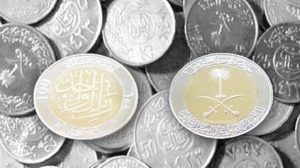
Saudi Arabia to replace the one-riyal note with coins (Image courtesy of Asharq Al-Awsat)
SAMA made the announcement as part of their introduction of new coin designs using modern techniques in coin manufacturing.
Under their transition plan, SAMA will allow the SR1 paper note to circulate alongside the new coin as the notes will be withdrawn from circulation. When the coins become available, the banks will be ordered to replace the SR1 note with a coin based on an availability formula that will be provided when the coins are ready for circulation.
According to Society for Worldwide Interbank Financial Telecommunication (SWIFT), the company that runs the network that enables the world’s financial institutions to security send financial transactions to each other, the United States dollar makes up 40.86-percent of every transaction in the world (as of February 2017). The United States Gross Domestic Product (GDP), the measure of an economy’s output, is over $19 trillion (in 2017 according to the International Monetary Fund) more than any country or trading cooperative (such as the European Union). But the United States is the only country ranked in the Top 10 of either of these lists to continue to produce its unit currency in paper form.
For a country that is supposed to be a leader, it looks like the United States has fallen behind the rest of the world. It is time to eliminate the one-dollar Federal Reserve Note.
And now the news…

May 20, 2018
A new £1 coin could actually end up earning you hundreds thanks to a Royal Mint 'error'. Three examples of the error have already been seen by ChangeChecker – and they are selling for more than £200.  → Read more at bristolpost.co.uk
→ Read more at bristolpost.co.uk

May 22, 2018
Prosecutors won’t pursue charges against a drummer accused of stealing rare coins and a passport from famed New Orleans musician Fats Domino.  → Read more at pagesix.com
→ Read more at pagesix.com

May 22, 2018
The sifting project, which has operated since 2004 in the Emek Tzurim National Park, aims to salvage religious and historical artifacts from the rubble, as well as to educate the public about the veracity of Jewish history on the Mount.  → Read more at jns.org
→ Read more at jns.org

May 22, 2018
Aaron Judge and Michael Conforto are two of the young stars that New York baseball fans have been buzzing about the past two years. Now fans of the Yankees and Mets outfielders can now get the star…  → Read more at nysportsday.com
→ Read more at nysportsday.com

May 24, 2018
2018 Baseball Treasure MLB Coins checklist, release date, silver and gold coin info and all you need to know about the officially licensed set of baseball coins.  → Read more at beckett.com
→ Read more at beckett.com

May 25, 2018
The much-ballyhooed summit between the United States and North Korea met its end Thursday. The cancellation, for now, stamps out the prospects for peace, yet does nothing to stop the snazzy coins featuring Donald Trump and Kim Jong Un in front of patriotic backdrops surrounded by olive branches  → Read more at cnn.com
→ Read more at cnn.com

May 25, 2018
The Saudi Arabian Monetary Authority (SAMA) will start withdrawing SR1 banknotes from the market from Thursday, SAMA has said. In a statement, SAMA announced issuing its sixth edition, which was developed during the reign of the Custodian of the Two  → Read more at aawsat.com
→ Read more at aawsat.com
May 17, 2018 | coins, dollar, eBay, Peace
While browsing on eBay, I noticed a few auctions of what I thought were philatelic (stamp collecting) cachets with Morgan and Peace dollars honoring different aspects of history. Not knowing much about them, I placed some bids based on the estimated values of the coins.
The difference between a First Day Cover (FDC) and a cachet is that the FDC is stamped on the first day of issue usually with a special commemorative postmark. A cache is a souvenir cover that is not postmarked as the first day of issue.
Another interesting collectible that combines philately and numismatics is called a Philatelic Numismatic Cover (PNC) or sometimes just coin cover. The U.S. Mint has produced coin covers for the 50 State Quarters, Westward Journey, and Presidential Dollars series as well as the first Sacagawea dollar. These are fun collectibles and something I will talk about in the future.
When the auctions were over, I won one with the 1926-S Peace dollar. Although the description seemed in order, I did not know what to expect. When it arrived I think it is more interesting than advertised.
First, the item is not an envelope by a heavy stock card that is 9-inches long by 4.875-inches wide. It is to honor the anniversary of the United States agreeing to join the World Court on January 27, 1926. The card includes a 5-cents stamp commemorating International Cooperation Year that was issued on June 26, 1965, and a 33-stamp that was in use when this was created in 2001. It is postmarked on January 27, 2001 in Washington, D.C., the 75th anniversary of the event.
The Peace dollar is definitely circulated and would probably grade in the Very Fine range if sent to a third-party grading service. It is encased in plastic which is sandwiched between two panels of cardboard to make up the card. The back of the card has a longer narrative of the history.
Originally, I was only interested in it for the coin since I am a fan of the Peace dollar. But seeing the card makes me wish I would have bid higher for more of them. The other problem is that I do not know who made them. This card looks similar to ones described as being from the Postal Commemorative Society. However, I have seen several different descriptions to make me unsure.
If anyone can provide more information, please post it as a comment below. I would like to learn more!
May 1, 2018 | coins, commemorative, dollar, legislative
 The first of the month is when I usually report about the introduction or progress of numismatic-related legislation in congress for the previous month. For April 2018, there is nothing to report.
The first of the month is when I usually report about the introduction or progress of numismatic-related legislation in congress for the previous month. For April 2018, there is nothing to report.
Thus far, the 115th Congress passed The American Legion 100th Anniversary Commemorative Coin Act (Pub. L. 115-68) which allows for a gold $5, silver dollar, and clad half-dollar coins to commemorate the American Legion in 2019.
There have been no authorizing laws passed for commemoratives after 2019.
Two bills have passed the House of Representatives and are waiting in committees in the Senate for action:
- The Naismith Memorial Basketball Hall of Fame Commemorative Coin Act (H.R. 1235) would allow the minting of q gold $5, silver dollar, and clad half-dollar coins in honor of the 60th anniversary of the Hall of Fame in Springfield, Massachusetts.
- The American Innovation $1 Coin Act (H.R. 770) would be a 14-year $1 coin program that would issue coins commemorating innovation and innovators representing each state, the District of Columbia, and U.S. territories.
Just because these bills passed in the House does not mean the Senate will do anything about them. Both can die in committee without any consideration.
So that the record is complete, here are the numismatic-related bills introduced in the House of Representatives waiting in committee:
- Muhammad Ali Commemorative Coin Act (H.R. 579)
- Duty First Act (H.R. 1582)
- National Purple Heart Hall of Honor Commemorative Coin Act (H.R. 1683)
- Cents and Sensibility Act (H.R. 2067)
- Christa McAuliffe Commemorative Coin Act of 2017 (H.R. 2256)
- Currency Optimization, Innovation, and National Savings Act of 2017 (H.R. 2299)
- United States Coast Guard Commemorative Coin Act of 2017 (H.R. 2317)
- President John F. Kennedy Commemorative Coin Act (H.R. 3274)
- 75th Anniversary of the End of World War II Commemorative Coin Act (H.R. 4044)
- Plymouth 400th Anniversary Commemorative Coin Act of 2017 (H.R. 4539)
- National Law Enforcement Museum Commemorative Coin Act (H.R. 4732)
- Women’s History and Nineteenth Amendment Centennial Quarter Dollar Coin Program Act (H.R. 5308)
- To define the dollar as a fixed weight of gold. (H.R. 5404)
Not to be outdone, here is the list for the Senate:
- Saint-Gaudens National Historical Park Redesignation Act (S. 312)
- Currency Optimization, Innovation, and National Savings Act of 2017 (S. 759)
- Duty First Act (S. 921)
- United States Coast Guard Commemorative Coin Act of 2017 (S. 1021)
- American Innovation $1 Coin Act (S. 1326)
- Naismith Memorial Basketball Hall of Fame Commemorative Coin Act (S. 1503)
- President John F. Kennedy Commemorative Coin Act (S. 1568)
- Muhammad Ali Commemorative Coin Act (S. 166)
- 75th Anniversary of the End of World War II Commemorative Coin Act (S. 1718)
- Plymouth 400th Anniversary Commemorative Coin Act of 2017 (S. 2189)
- American Innovation $1 Coin Act (S. 2399)
Mar 1, 2018 | coins, dollar, legislative
 I really want to say something pithy in this month’s legislative update, but nothing comes to mind. It is a situation where there is both a lot and a little going on. There is a lot of talk coming from Capitol Hill but there is little else. The number of bills and resolutions have reduced.
I really want to say something pithy in this month’s legislative update, but nothing comes to mind. It is a situation where there is both a lot and a little going on. There is a lot of talk coming from Capitol Hill but there is little else. The number of bills and resolutions have reduced.
To judge the activity of Congress, I use a few sites to send alerts when one of my senators of the representative of my congressional district does something that registers legislatively. Most of the alerts are for votes with the occasional introduction of a bill or being added as a co-sponsor to other bills. In my unscientific view of what these people have been doing since the opening of the second session of the 115th Congress, the answer appears to be “not much.”
Sen. Chris Murphy (D-CT) did cause a little numismatic stir when he introduced the American Innovation $1 Coin Act. Murphy wants to add a $1 coin for each state, territory, and the District of Columbia to honor a significant innovation, an innovator, or a group of innovators. For example, Tennessee could consider honoring the work in Oak Ridge; Florida could consider honoring Katherine Johnson, Dorothy Vaughan, and Mary Jackson; while New Jersey would likely honor Thomas Edison.
Even if it is a good idea, the program will be a failure as long as Congress does nothing to ensure dollar coins are circulated. The only way to ensure dollar coins circulate is to stop issuing the one-dollar note. Given that Congress has a hard time passing budget and spending bills, I doubt they would do anything to change the monetary system, regardless of the savings that have been projected.
On a lighter note, David Ryder’s nomination to become the next director of the U.S. Mint is still on hold while Chuck Grassley (R-IA) pouts from his Senate office.
S. 2399: American Innovation $1 Coin Act
Read twice and referred to the Committee on Banking, Housing, and Urban Affairs. — Feb 7, 2018
Nov 24, 2017 | cents, coins, dollar, fun, halves, nickels, state quarters
 What would it take to put together a modern type set?
What would it take to put together a modern type set?
How would you define a modern type set?
This is the summary of the email conversation I have been having with someone looking for an interesting challenge to work on with his children.
For new readers and those new to numismatics, a type set is one coin of every type regardless of date or mintmark. Although some coins have one-year types, like the 50 State Quarters, there are others where one coin will represent an entire series, like the Roosevelt Dime.
While there are a lot of interesting coins types we focused on modern coins. Modern coins are those struck since 1965 when coins went from silver to copper-nickel except for the Kennedy half-dollar that was made of 40-percent silver through 1970. To budding young numismatists, modern coins are all they know.
In fact, all they know is that the quarter has a constantly changing reverse and they have seen differences in the Lincoln cent and the Jefferson nickel. They did not go through the fiasco of the Susan B. Anthony dollar or marvel at the first circulating commemoratives of the modern era: the dual-dated bicentennial coins. They were not around to search boxes of Cheerios for the new Sacagawea dollar coin or the millennial cent.
-
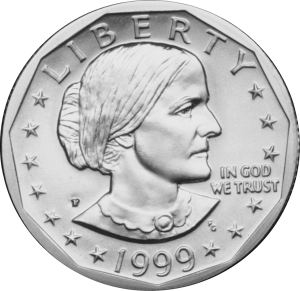
-
Obverse of the Susan B. Anthony Dollar
-

-
The 2000 Cheerios Dollar
Modern coins do not get the same love as some of the classics. Aside from not containing silver, there have been controversies over designs (see the “spaghetti hair” that George Washington was sporting on the 50 State Quarters) and how the relief on coins has been lowered by the U.S. Mint in an attempt to extend die life.
Some not-so-great designs
-

-
Obverse of the 50 State Quarters with Washington’s spaghetti hair
-
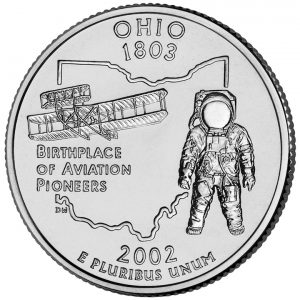
-
2002 Ohio Quarter with the hanging astronaut
-
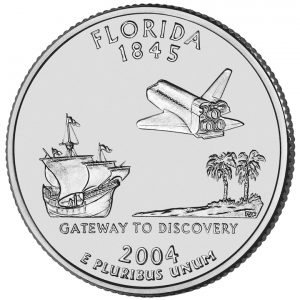
-
2004 Florida Quarter with a jumble of stuff
Although people love the classic designs two of my favorite designs of the modern era is the Drummer Boy reverse on the Bicentennial quarter and the Thomas Jefferson portrait on the obverse of the 2005 Westward Journey nickels. And even though I have not written much about them, there are some fantastic designs in the America the Beautiful Quarters series. A few that you may want to take a second look at include 2017 Ellis Island, 2017 George Rogers Clark National Historic Park, 2016 Shawnee National Forest, and the 2015 Blue Ridge Parkway quarters just to name a few.
A few of the great America the Beautiful Quaters designs
-
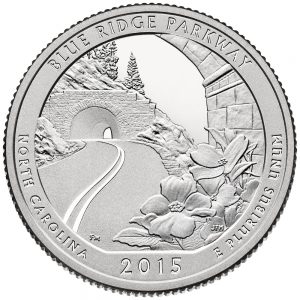
-
2015 Blue Ridge Parkway – North Carolina
-

-
2016 Shawnee National Forest – Illinois
-

-
2017 Ellis Island – New Jersey
-
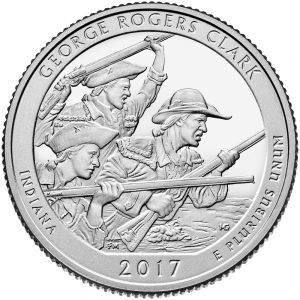
-
2017 George Rogers Clark National Park – Indiana
Sitting with a Red Book, I started to list the coin types that would make up a modern type set. If we limited the set to circulating coins (e.g., not including half-dollars and one-dollar coins) that can be found in pocket change, there would be 128 coins with a face value of $28.97.
| Type |
No. in Series |
Face Value |
Series Value |
| Lincoln Memorial Cents |
2 |
0.01 |
0.02 |
| Lincoln Bicentennial Cents |
4 |
0.01 |
0.04 |
| Lincoln Shield Censt |
1 |
0.01 |
0.01 |
| pre-2004 Jefferson Nickels |
1 |
0.05 |
0.05 |
| Westward Journey Nickels |
4 |
0.05 |
0.20 |
| Return to Monticello Nickels |
1 |
0.05 |
0.05 |
| Roosevelt Dimes |
1 |
0.10 |
0.10 |
| Washington Quarters |
1 |
0.25 |
0.25 |
| Bicentennial Quarters |
1 |
0.25 |
0.25 |
| 50 State Quarters |
50 |
0.25 |
12.50 |
| D.C. and U.S. Territories Quarters |
6 |
0.25 |
1.50 |
| America the Beautiful Quarters |
56 |
0.25 |
14.00 |
| Total |
128 |
1.53 |
28.97 |
The above table does take into consideration the entire 56 Amercia the Beautiful Quarters series including future issues. The kids have to understand the concept of future issues and maintain space for these coins in their album.
Starting the set with pocket change allows the kids to get used to the concept of looking at the coins to understand what they are looking for. To help with their search each child was given a Red Book and two apps on their iPads: PCGS CoinFacts and PCGS Photograde. They can use the Red Book as a handy off-line reference but use PCGS CoinFacts to learn more when they have access. Photograde is very useful to help them assess the condition of the coins.
While collectors have a basic understanding of coin grading, getting it right can be difficult. These kids were given a basic lesson on things to look for when trying to assess the condition of the coins they find. It will be interesting to see how they interpret this information.
Once we covered coins that can readily be found in circulation, we then discussed the other business strikes that are usually not found in ordinary pocket change.
After an interesting discussion, it was decided to make those a separate collection.
As a separate collection, this will give the kids an opportunity to go to dealers and coin shows to allow the kids to learn about buying coins in this environment. They will learn how to talk with a dealer, gain experience negotiating, and do some comparison shopping. It will let them get the experience and see different coins but maintain a collection discipline that will allow them to learn to collect on a budget.
What are the modern type coins that do not see a lot of circulation? Once again, I sat with the Red Book and came up with the following list:
| Type |
No. in Series |
Face Value |
Series Value |
| Kennedy Half Dollars |
1 |
0.50 |
0.50 |
| Bicentennial Kennedy Half Dollar |
1 |
0.50 |
0.50 |
| Eisenhower Dollars |
1 |
1.00 |
1.00 |
| Bicentennial Eisenhower Dollars |
2 |
1.00 |
2.00 |
| Susan B. Anthony Dollars |
1 |
1.00 |
1.00 |
| Sacagawea Dollars |
1 |
1.00 |
1.00 |
| Native American Dollars |
11 |
1.00 |
11.00 |
| Presidential Dollars |
39 |
1.00 |
39.00 |
To complete the task, I came up with a checklist for all of the modern coins in two formats. One is a printed version that they could keep in their pocket as they go about their day. The other is a spreadsheet that can act as an official record. The paper version is a very basic PDF file that can be used to write notes. The spreadsheet offers more information. It also allows them to come up with their own catalogue.
Both files are attached for you to use (see the Creative Commons Attribution-NonCommercial-ShareAlike 4.0 International License for text of the permissions granted with this release).
It will be interesting to see what these kids do!
Checklists
Modern Coinage Type Set Checklist
Modern Coin Type Set Detailed Checklist
Oct 20, 2017 | coins, commemorative, dollar
NOTE: I reached out to LeRoy Transfield, the winner of the design competition for the World War I Centennial Commemorative dollar coin to ask about his experience with the design competition. Yesterday, I posted a write-up he provided to me. Today, are his answers to additional questions I had.
-

-
2018 World War I Centennial Silver Dollar Obverse — “Soldier’s Charge” by LeRoy Transfield
-

-
2018 World War I Centennial Silver Dollar Reverse — “Poppies in the Wire” by LeRoy Transfield
Coin Collectors Blog: I see from your website that your expertise is sculpting larger works, such as statues. Were there techniques you have used in the past that helped you with the design process?
LeRoy Transfield: I haven’t done that many low relief sculptures before although I have had many years of experience in high relief. I mostly do the figure but from my early training in college I learnt that basic elements and principles of design plays a big role.
CCB: Did you have interaction with the selection committee? Did they ask for modifications, specifically based on their ability to strike a proper coin?
LT: I didn’t have any interaction with the committee other than when I spoke to them when they called me to say I won. They made some modifications to my submission such as making the rifle more accurate and the helmet more covered. The drawing they presented is actually not mine. I think there are problems with it such as around the eyes, proportions a little off on the soldier. But I think the final coin sculpted by Don Everhardt will look a lot better than that.
CCB: How were you notified that you won the competition?
LT: I was in Hawaii working on a project there which is a nice place to receive good news. They emailed me saying they wanted a conference call with me. It was 4 officials from the mint, The director, the head sculptor Don Everhardt, Meagan the project manager and one other can’t remember that one: sorry:8. I was informed I won and that the judging was unanimous that my design was outstanding among the entries. Don was very nice and said I did very nice figure work and that I had ‘nailed the design.’ I understand the project was his last sculpture before he retired. It was a very exciting time and a little stressful considering what it meant for the future and that I didn’t really think I would win since it was my first coin attempt. The $10,00 prize was also a great bonus and justified the summer I spent staring off into space, doodling and sitting around looking at war movies (Flags of our Fathers, Letters from Iowa Jima and Band of Brothers were my favorite).
CCB: Now that you won your first design competition for the U.S. Mint, would you consider entering another? Would you consider becoming a member of the U.S. Mint’s Artistic Infusion Program?
LT: I am a finalist for the Apollo 11 coin which we have already submitted our entries to. I as in my WW 1 coin design, I am pleased with what I came up with and whether it does well or not, I am happy to have to judged and my initials to the coin if it does win. I think this competition will be interesting because they said they will post the entries online but the committee will make the final decision. I didn’t enter the Breast Cancer Awareness coin because at the time I couldn’t think of anything that would say that in a coin. I could have thought of some cool designs but nothing (appropriate) to say oh yes that coin is to do with breast cancer.
I would become a member if they asked. I think sometimes the coins the mint puts out are too illustrative and rely too much on technology (such as Z brush). Coins are very hard to design especially in low relief since there are so many rules and so many things that look bad when translated to low relief. In the end I would use the ultimate test I do on any sculpture I make, to stand well back and be as objective as possible and say-does it look any good?
I would like to thank LeRoy Transfield for his time!
Oct 18, 2017 | cents, coins, currency, dollar, Federal Reserve, US Mint
Could the recent cyber attacks and growing severity of cybersecurity issues become the motivation for Congress to vote to reform United States currency?
According to Philip Diehl and Edmund Moy, former Directors of the U.S. Mint, the discussion as to remove the cent and paper dollar from circulation should be part of the current budget and tax overhaul debates.
-

-
Philip N. Diehl
35th Director of the U.S. Mint
June 1994 — March 2000
-

-
Edmund C. Moy
38th Director of the U.S. Mint
September 2006 — January 2011
The discussion is the same as it has been. The cost of zinc has risen causing the manufacturing costs of the Lincoln cent to climb above its face value. Even with operating efficiencies that have brought down the cost of manufacturing to its lowest levels in many years, the price of zinc keeps makes the materials cost more than the coin is worth.
As for the paper dollar, the Government Accountability Office has published several reports over the years that demonstrate the cost savings between using the paper dollar versus a coin dollar. The last GAO report (GAO-13-164T) concluded that using a dollar coin instead of the paper note “could potentially provide $4.4 billion in net benefits to the federal government over 30 years.”
This is not a new discussion. The only change is that this is being suggested by former Directors of the U.S. Mint from both sides of the aisle. Diehl was appointed by Bill Clinton and served from June 1994 through March 2000. Moy was appointed by George W. Bush and served from September 2006 through January 2011.
Earlier this year, Sen. John McCain (R-AZ) introduced the Currency Optimization, Innovation, and National Savings Act of 2017 (COINS Act) (S. 759). McCain’s bill would require:
- Suspending the production of the one-cent coin for 10 years except for collectibles. After three years, the GAO would doe a study to determine whether production should remain suspended or should be reinstated. This would not demonetize the cent.
- Change the composition of the nickel to 80-percent copper and 20-percent nickel. This should bring down the cost of materials used in striking the five-cent coin to be on par with its value. Efficiencies in manufacturing could lower costs further.
- If the bill becomes law, two years after it is enacted, the Federal Reserve will begin removing $1 Federal Reserve Notes from circulation. This will probably be done by the banks who will take the notes on deposit and send them back to the Federal Reserve where they will be destroyed. Coins would take their place. The $1 FRN could still be produced for the collector market.
Sources report that the chances of McCain’s bill getting a hearing are minuscule. While having lunch with on congressional staffer, I was given three reasons why Congress will not address this issue:
- States with a large rural population primarily west of the Mississippi River represented by Republicans are unlikely to support the removal of the one-cent coin. Removal of the coin is viewed as a hidden tax against the people with fear mongering that suggest the government is keeping the extra money that would become on the rounding of prices.
- States with large poor populations, primarily in the south, and their advocates who believe that taking away the pennies are a way to separate more money from poor people who can least afford to lose the ability to pay in cents.
- Surveys show that most of the people older than Millenials are against removing the paper dollar. Since this population constitutes the majority of the voters and donors, the politicians are not about to make those people upset.
Another issue is that McCain is not popular amongst his fellow Republicans. If the issue is addressed, it is likely to be discussed as part of a bill that does not bear McCain’s sponsorship.
Given the partisan nature of politics and the perceptions of the members of Congress, there is a very little chance of the Coins Act or any similar legislation being enacted during this session of Congress.
Jun 30, 2017 | coins, dollar, US Mint
This is last article of a 4 part series:

Presidential $1 Coin Common Reverse

For the first time in the modern era the date, mintmark, and mottos “E PLURIBUS UNUM” and “IN GOD WE TRUST” struck into (incuse) the edge of the coin. The last time edge lettering was used on circulating U.S. coinage was in the 1830s.
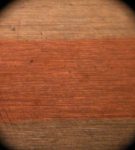
Altered Washington Dollar Edge. Read more here
If you are going to buy Presidential dollars with missing edge lettering, it is advisable to buy them encapsulated by a third-party grading service. After the error was discovered, unscrupulous people began to file the edges of the coin in an attempt to fool collectors. The third-party grading services know how distinguish the legitimate error versus the fake.

Dollar Coin Edge Lettering
Other collectible edge errors include the doubling of the lettering. When encapsulated by the grading services, it is called either “DOUBLE EDGE LETTERING” or “OVERLAPPED LETTERING” depending on the service. Doubled lettering is a rarer mistake than missing edge lettering. Similar to the missing edge lettering error, there has been attempts to alter coins to make it look like they have these errors which it is advisable to buy these coins encapsulated by a third-party grading service.
If you are looking for different ways of collecting Presidential Dollars, the U.S. Mint offered First Day Covers for each of the presidents. Each colorful cover includes the stamp of the day postmarked from the capital or city the president was from on the first day that the coins were issued. They also include one uncirculated Presidential dollar struck on the first day of production. These first day covers are the only way to guarantee that you own coins that were struck on the first day of their production. With information about each president, it makes for an attractive set.
-

-
2010 Lincoln First Day Cover (before branding)
-
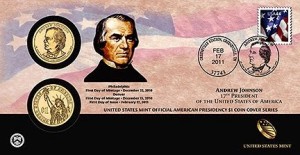
-
2011 Andrew Johnson First Day Cover (after branding)
Another option to collecting Presidential Dollars is to collect the coin and medal set. Each specially produced card includes an uncirculated dollar for each president and a 1.5-inch bronze medal of the corresponding first spouse coin. The only difference in design between the medal in this set and the first spouse coin is the medal does not have a denomination. If the president was widowed or not married at the time of his presidency, a special Liberty gold coin was produced. The coin and medal set contains a medal similar to the gold coin. Remember, John Tyler and Woodrow Wilson became widows and then remarried during their term. There are two cards for each president with different first spouse medals.
-
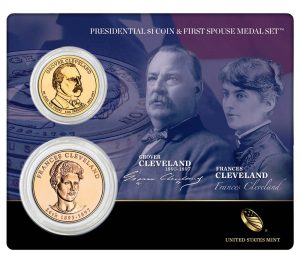
-
2012 Grover Cleveland second administration Dollar & Frances Cleveland Medal Set
-
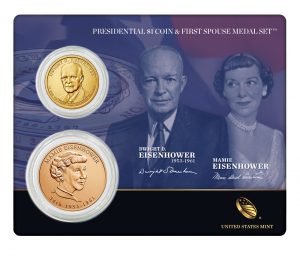
-
2015 Dwight D. Eisenhower Dollar & Maine Eisenhower Medal
-
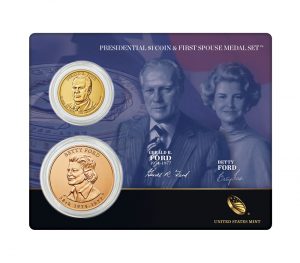
-
2016 Gerald Ford Dollar & Betty Ford Medal
Series Details
Presidential Dollars
- 2007:
- George Washington, John Adams, Thomas Jefferson, James Madison
- 2008:
- James Monroe, John Quincy Adams, Andrew Jackson, Martin Van Buren
- 2009:
- William Henry Harrison, John Tyler, James K. Polk, Zachary Taylor
- 2010:
- Millard Fillmore, Franklin Pierce, James Buchanan, Abraham Lincoln
- 2011:
- Andrew Johnson, Ulysses S. Grant, Rutherford B. Hayes, James Garfield
- 2012:
- Chester A. Arthur, Grover Cleveland, Benjamin Harrison, Grover Cleveland
- 2013:
- William McKinley, Theodore Roosevelt, William Howard Taft, Woodrow Wilson
- 2014:
- Warren Harding, Calvin Coolidge, Herbert Hoover, Franklin D. Roosevelt
- 2015:
- Harry S Truman, Dwight D. Eisenhower, John F. Kennedy, Lyndon B. Johnson
- 2016:
- Richard M. Nixon, Gerald Ford, Ronald Reagan
First Spouse Gold $10 Coins
- 2007:
- Martha Washington, Abigail Adams, Thomas Jefferson’s Liberty,† Dolley Madison
- 2008:
- Elizabeth Monroe, Louisa Adams, Andrew Jackson’s Liberty,† Martin Van Buren’s Liberty†
- 2009:
- Anna Harrison, Letitia Tyler,‡ Julia Tyler,†† Sarah Polk, Margaret Taylor
- 2010:
- Abigail Fillmore, Jane Pierce, James Buchanan’s Liberty,* Mary Lincoln
- 2011:
- Eliza Johnson, Julia Grant, Lucy Hayes, Lucretia Garfield
- 2012:
- Alice Paul,¶ Frances Cleveland (first term), Caroline Harrison,‡ Frances Cleveland (second term)
- 2013:
- Ida McKinley, Edith Roosevelt, Helen Taft, Ellen Wilson,‡ Edith Wilson††
- 2014:
- Florence Harding, Grace Coolidge, Lou Hoover, Anna Eleanor Roosevelt
- 2015:
- Elizabeth Truman, Mamie Eisenhower, Jacqueline Kennedy, Claudia Taylor “Lady Bird” Johnson
- 2016:
- Patricia Ryan “Pat” Nixon, Betty Ford, Nancy Reagan
Footnotes:
- †
- President was widowed prior to inauguration
- ‡
- First Spouse died during the president’s term
- ††
- Married the president during the president’s term
- *
- James Buchanan was the only bachelor president
- ¶
- President Chester Arthur was widowed prior to inauguration. However, the authorizing law gives the coin honor to Alice Paul, a suffragette who was born during Arthur’s administration
The Presidential Dollar series covered 39 presidents representing 40 terms were issued.
Along side of the presidents, there have been 35 first spouses were honored (Frances Cleveland appeared twice), four different Liberty coins were issued, and one First Spouse coin was issued to honor suffragette Alice Paul.
 → Read more at newschannel5.com
→ Read more at newschannel5.com → Read more at eastidahonews.com
→ Read more at eastidahonews.com → Read more at the-japan-news.com
→ Read more at the-japan-news.com → Read more at dailycamera.com
→ Read more at dailycamera.com → Read more at chronicle.co.zw
→ Read more at chronicle.co.zw → Read more at foxnews.com
→ Read more at foxnews.com → Read more at abc.net.au
→ Read more at abc.net.au → Read more at thestar.com
→ Read more at thestar.com



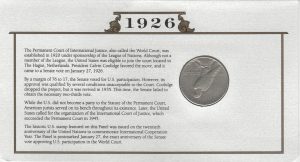
 The first of the month is when I usually report about the introduction or progress of numismatic-related legislation in congress for the previous month. For April 2018, there is nothing to report.
The first of the month is when I usually report about the introduction or progress of numismatic-related legislation in congress for the previous month. For April 2018, there is nothing to report.





















